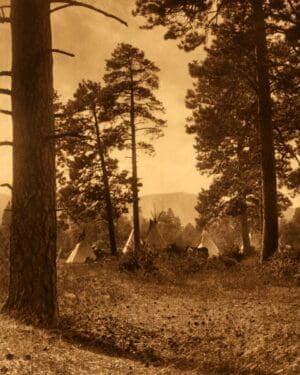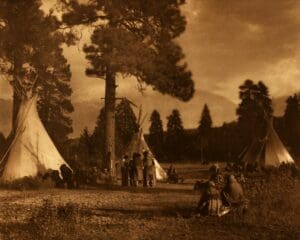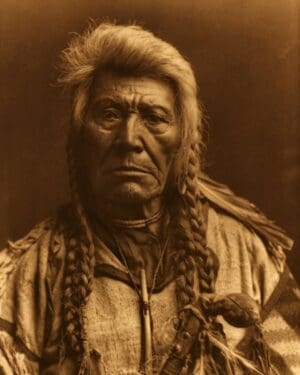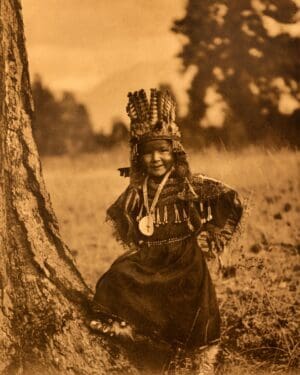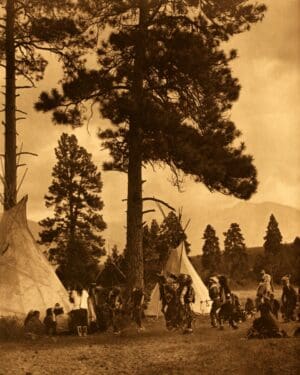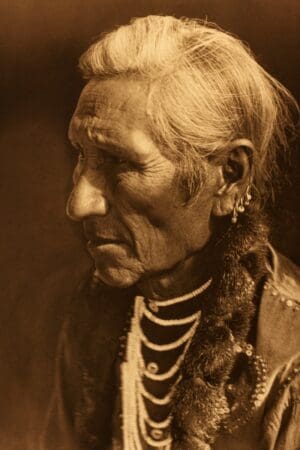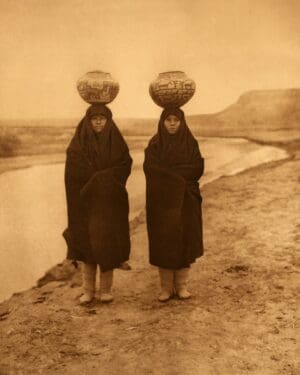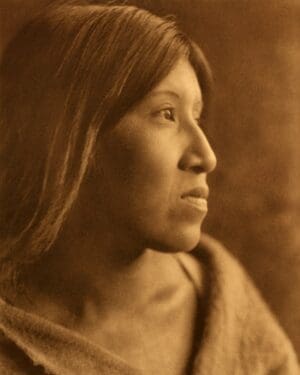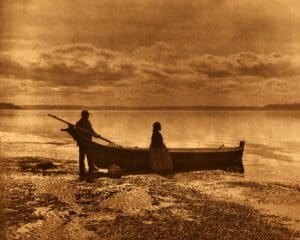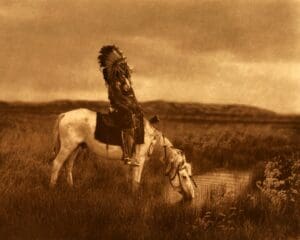Salishan Native Americans
Salishan Indian Photos by Edward S. Curtis
Tribal Summary
Dress
When first observed, all Salishan Indian tribes wore clothing of the plains type, although there is evidence that many of them had not long passed the state of practical nudity. Cox, in 1816, noted of the inhabitants of the Columbia between Yakima and Okanagan river, that the men were naked, while the women wore only a scanty breech-cloth. Men secured the hair in a knot at the back of the head, and curled upward the square-cut forelock; women folded up the braid at each side of the head and wrapped the resulting knots with strings of beads. Both styles changed about the middle of the nineteenth century, when they also ceased to wear bones or dentalium shells in the nose.
Dwellings
Lodges were covered with rush matting, the ground plan of a domicile for a single family being eicher circular or elliptical, and that of the community structure being long and rounded at the ends. Shelters of this last form, banked with earth at the bottom, were used in winter. The Flatheads have no tradition of any lodge-covering other than buffalo-skins.
Food
Primarily they were fish-eaters, but parties of the Flatheads, Pend d’Oreilles, and Kalispel made annual journeys to the buffalo plains, and the other tribes even as far westward as the Sinkiuse occasionally crossed the mountains. Deer and other mountain game were abundant, and roots and berries, especially camas, kouse, choke-cherries, and huckleberries, were staples.
Showing 1–9 of 21 results
-
Sale!
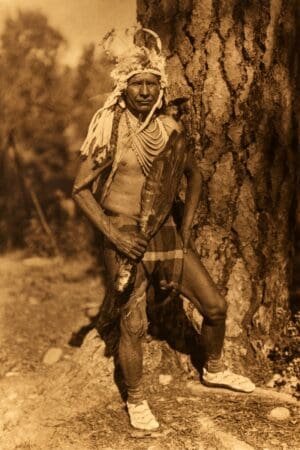
Big Knife – Flathead
$30.95 – $173.95 -
Sale!

By the river – Flathead
$18.95 – $120.95 -
Sale!

Dusty dress – Kalispel
$18.95 – $120.95 -
Sale!

Flathead camp
$18.95 – $120.95 -
Sale!

Flathead camp on Jocko River
$18.95 – $120.95 -
Sale!

Flathead chief
$18.95 – $120.95 -
Sale!

Flathead childhood
$18.95 – $120.95 -
Sale!

Flathead dance
$18.95 – $120.95 -
Sale!

Flathead profile
$30.95 – $173.95



